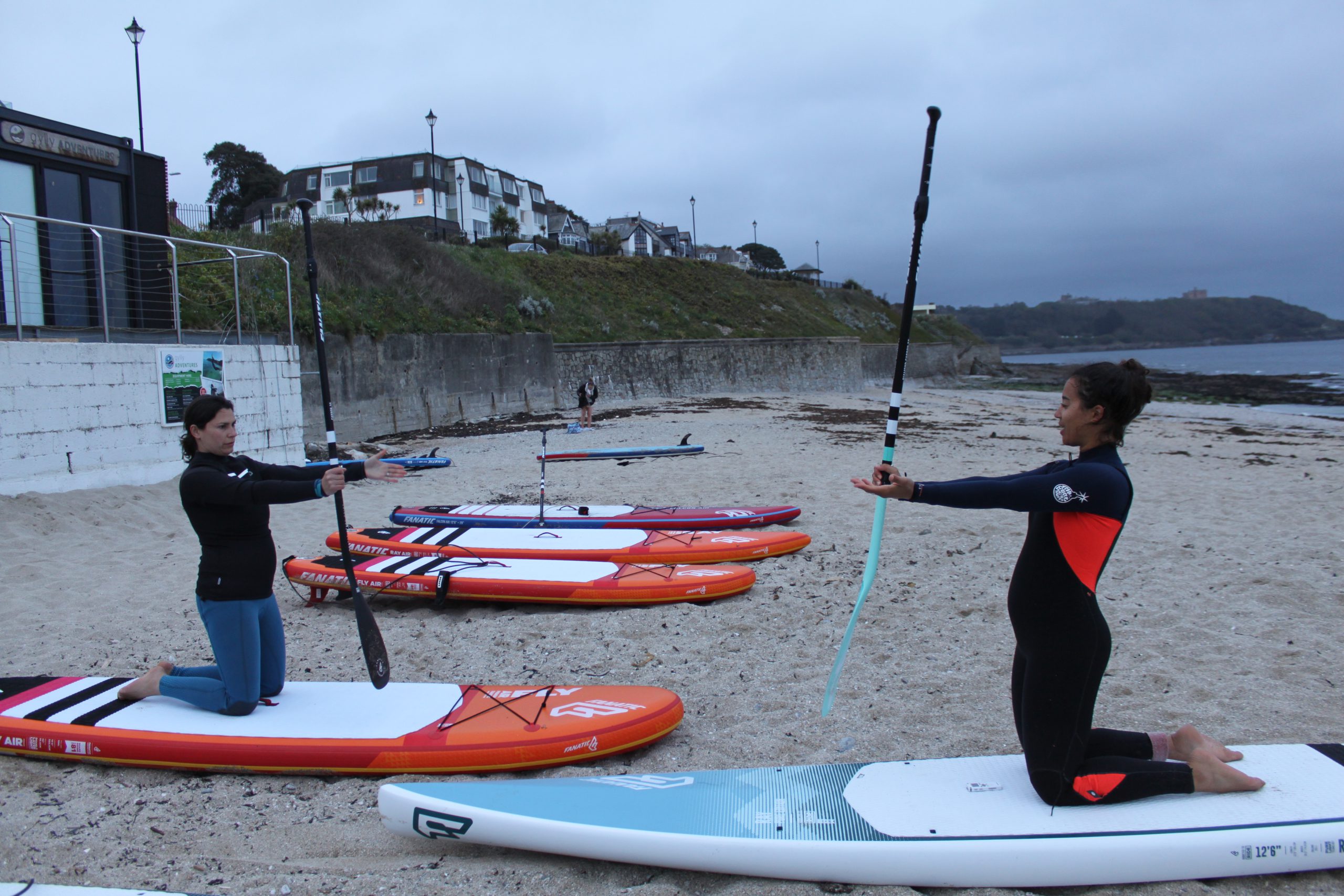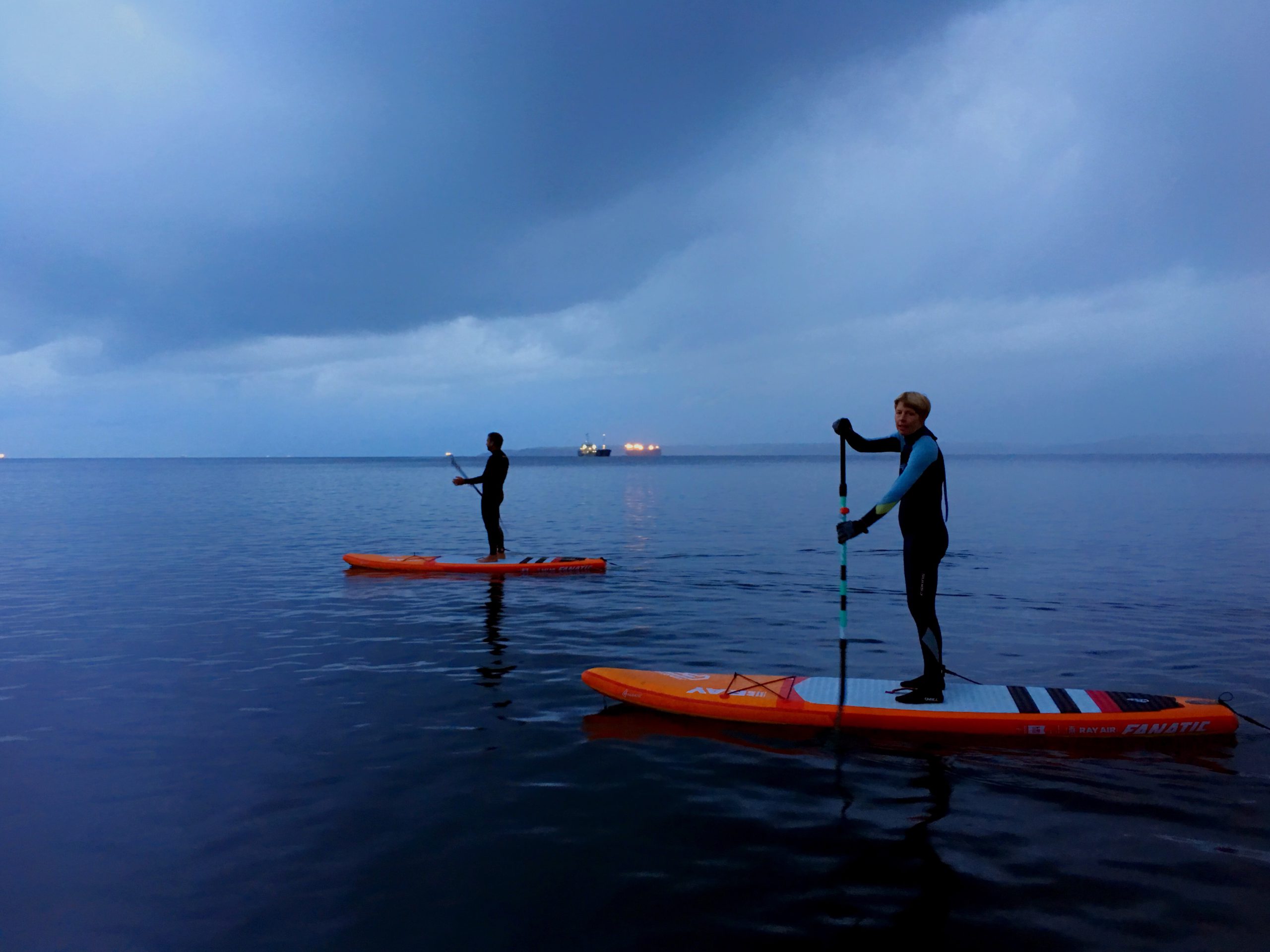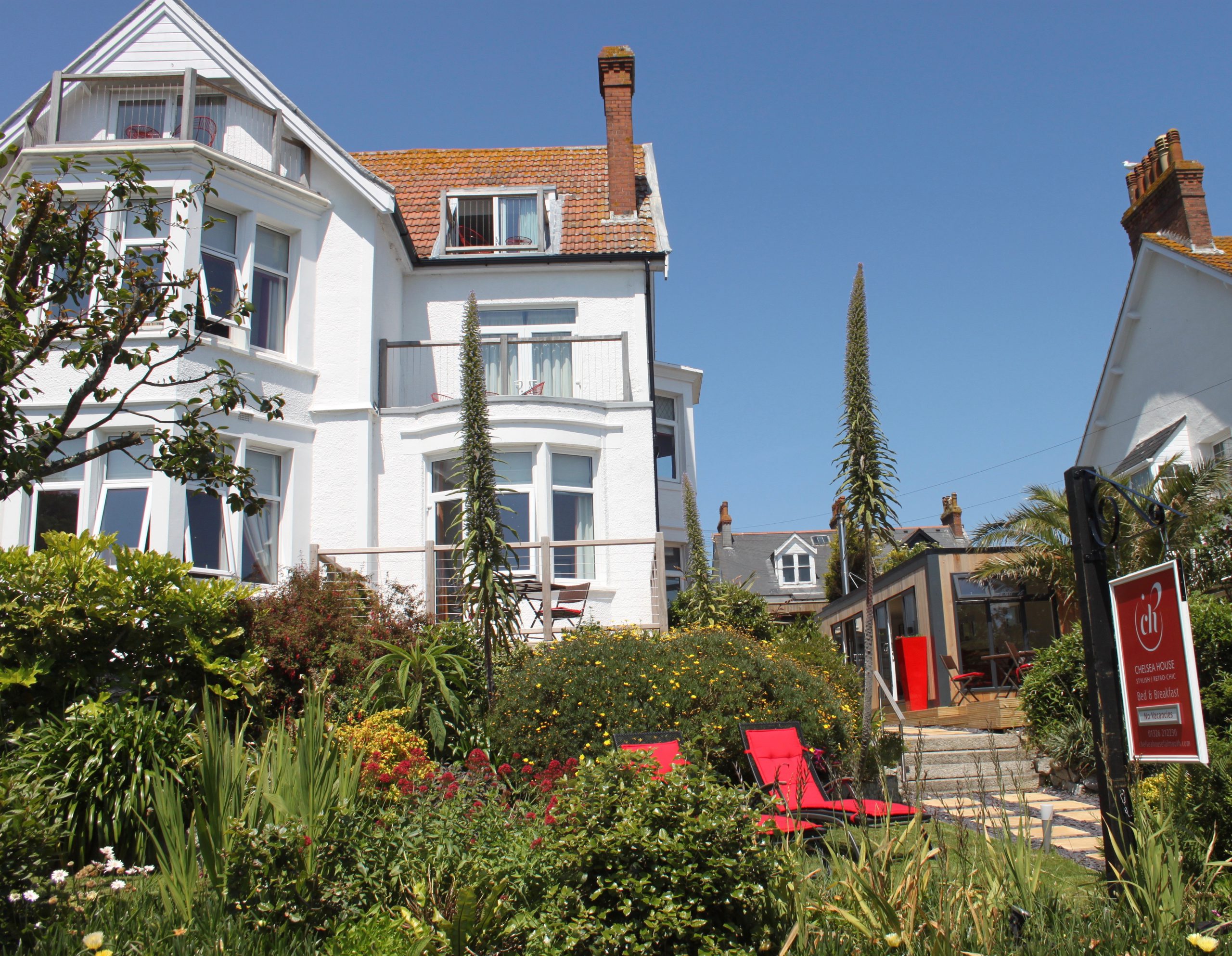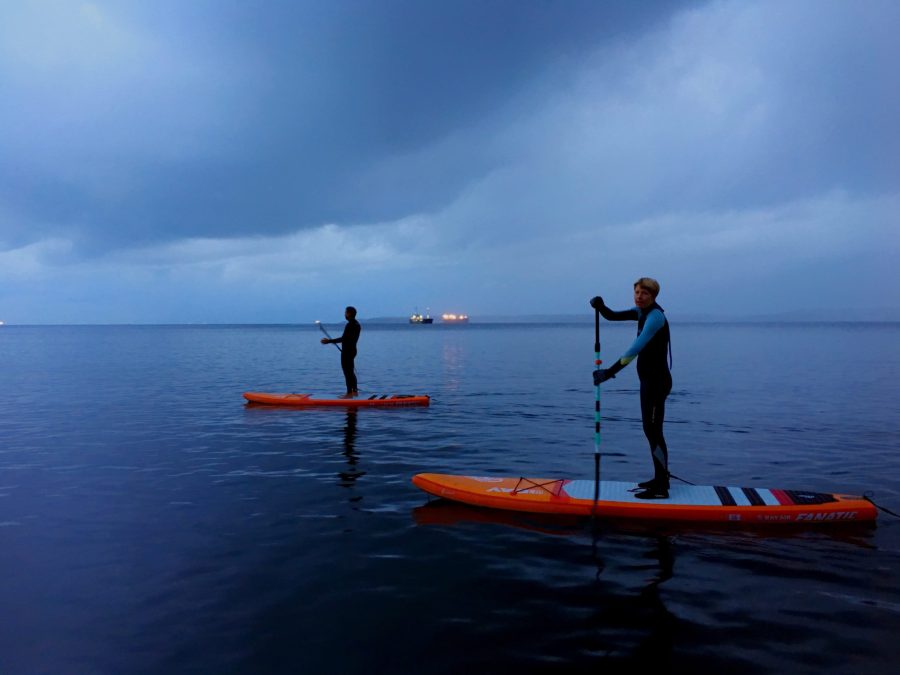Anna Turns joins WeSUP in South Cornwall to paddle the Falmouth coastline under the cover of darkness
The growing popularity of paddleboarding is possibly due to the sport’s accessibility – it’s relatively easy to pick up the basics and get afloat but there’s still a great deal of technique when it comes to becoming an accomplished, confident and efficient paddleboarder. With experience, it becomes more instinctive and yet even more so when one of your senses is substantially reduced. WeSUP, based on Gyllyngvase Beach in Falmouth on the south coast of Cornwall, is the first stand-up paddleboard school in the UK to offer night paddle tours. After dark, paddleboarders must rely much more heavily on feeling the board beneath their feet and tuning in to the sound of the wind and waves to constantly assess the conditions. There’s an enhanced sense of adventure when paddling at night, resulting in an often unexpected and memorable trip.
7.45PM DUSK DESCENDS
While having dinner at Gylly Beach Café as the sun sets, two keen swimmers are front-crawling their way across the bay, making headway despite the breeze. I’m more used to the sheltered waters of an estuary, and I normally paddle in flat conditions on bright, sunny days. The Falmouth coastline is more open and exposed and it’s getting dark – the bay looks fairly choppy, so all bets are off, and my nerves kick in. But next door at WeSUP headquarters, instructor Chloë Peglau puts my mind at ease: ‘Because of the slightly rougher conditions, we will head into the wind paddling west along the bay hugging the shoreline so paddling back is easier.’ We put on our wetsuits, grab the head torches and bike lights for our paddles, and head onto the sandy beach.
8PM BEACH BRIEF
Chloë begins my lesson with an introduction to the anatomy of my kit. According to her, my 12ft 6-inch touring paddleboard is really stable – all-round in nature and in practicality, so it’s perfect for learning on and fun to take into the waves. It’s inflatable so it can easily be packed up into the boot of a car, but it feels solid and sturdy. The board has a nose at the front, rails along the sides and tail at the back. Attached to the tail is the leash, which is worn around one ankle. ‘This is our number one piece of safety equipment,’ explains Chloë. ‘If you fall off, it keeps you close to your board.’ The handle in the middle of the board indicates the ‘sweet spot’ of the board – this is where the rider will be most balanced, so I must stand or kneel either side of this handle. The light, carbon-fibre paddle has a right and wrong way round; Chloë adjusts it for my height and demonstrates how to make sure it’s set square.
8.15PM ONE, TWO, THREE
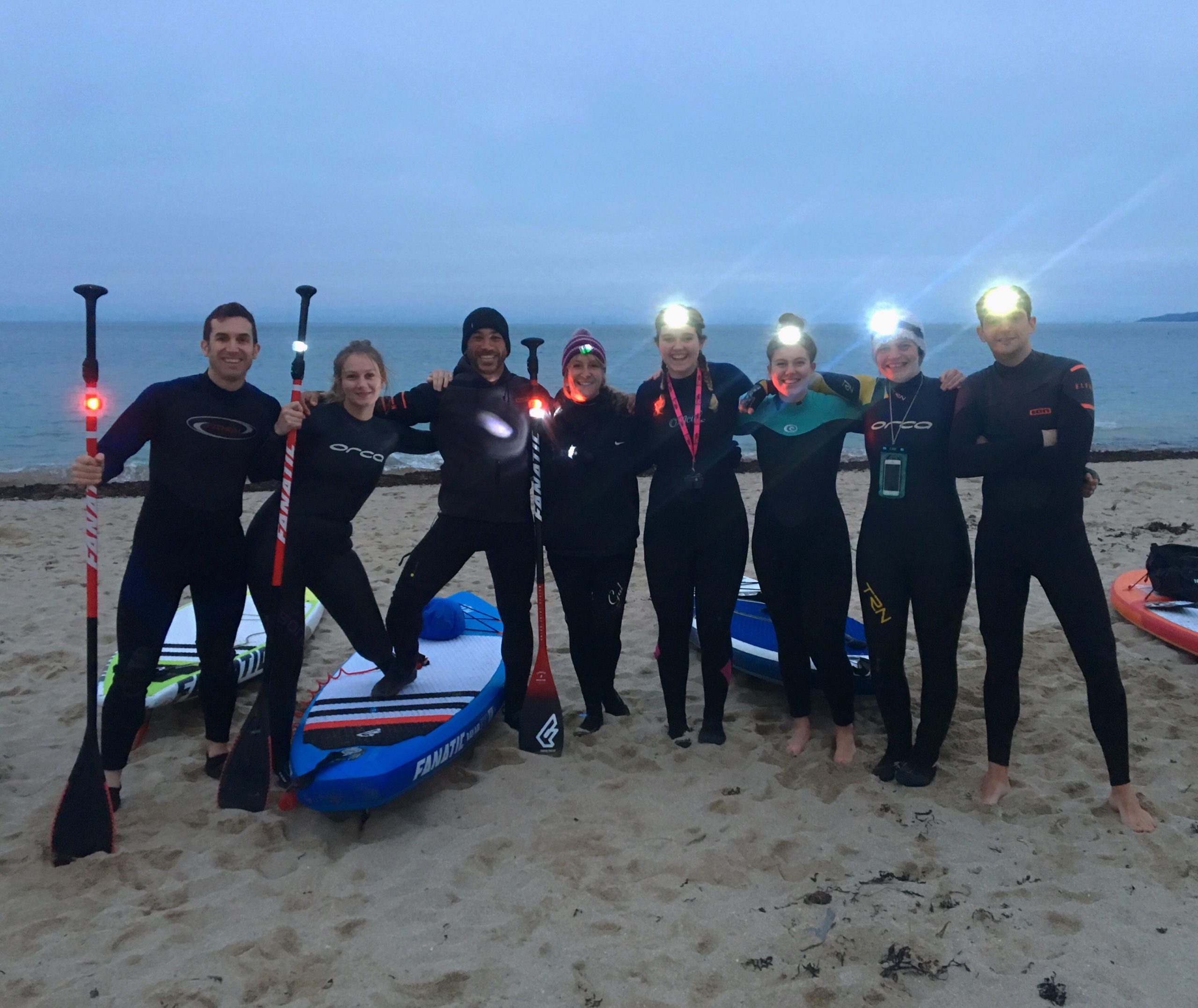
Chloë explains the three main strokes, the power stroke, push stroke and back paddle – success is all about paddle skills and she’s keen to share top tips and correct my bad ‘self-taught’ habits. The power stroke is used to generate power and go forward in a straight line, the push stroke turns the board and the back paddle will slow me down to regain control. To get the correct hand position for the power stroke while kneeling, I hold my paddle about 10-15 inches above the top of the blade with my right arm stretched, hold out my left arm and drop my paddle horizontally so hands are shoulder-width apart. I lift my paddle, reach forward, then drive the upright blade through the water, squeezing the water as far back as our hip, then pop it out. Chloë says that on windy days it’s important to get high cadence – that means lots of short, sharp strokes. For the push stroke, I hold the handle at the top of the paddle, and hold further down with the other hand, then reach forward to the nose of the board and draw a big rainbow-shape back towards the tail of the board. The back paddle is a reverse of the push stroke and works just like a handbrake turn, slowing down the glide of the board. The key is to relax my hands down to my hips, but I can feel the tension creeping in.
8.25PM GETTING AFLOAT
We wade into the sea up to our knees then hop onto the board in a kneeling position, mindful of the sweet spot. I feel the strength of the wind but putting Chloë’s tips into action I can cut through the chop with efficient power strokes. She’s keeping a close eye on me and I feel totally safe, despite the darkness. The lights along the coastline shine bright so I don’t feel isolated, and we don’t stray far from the beach to begin with. We stay low down to minimise our resistance in the wind – if we stood up now, our bodies would act like a huge sail, and I’m keen not to fall in.
8.40PM NIGHT PADDLING
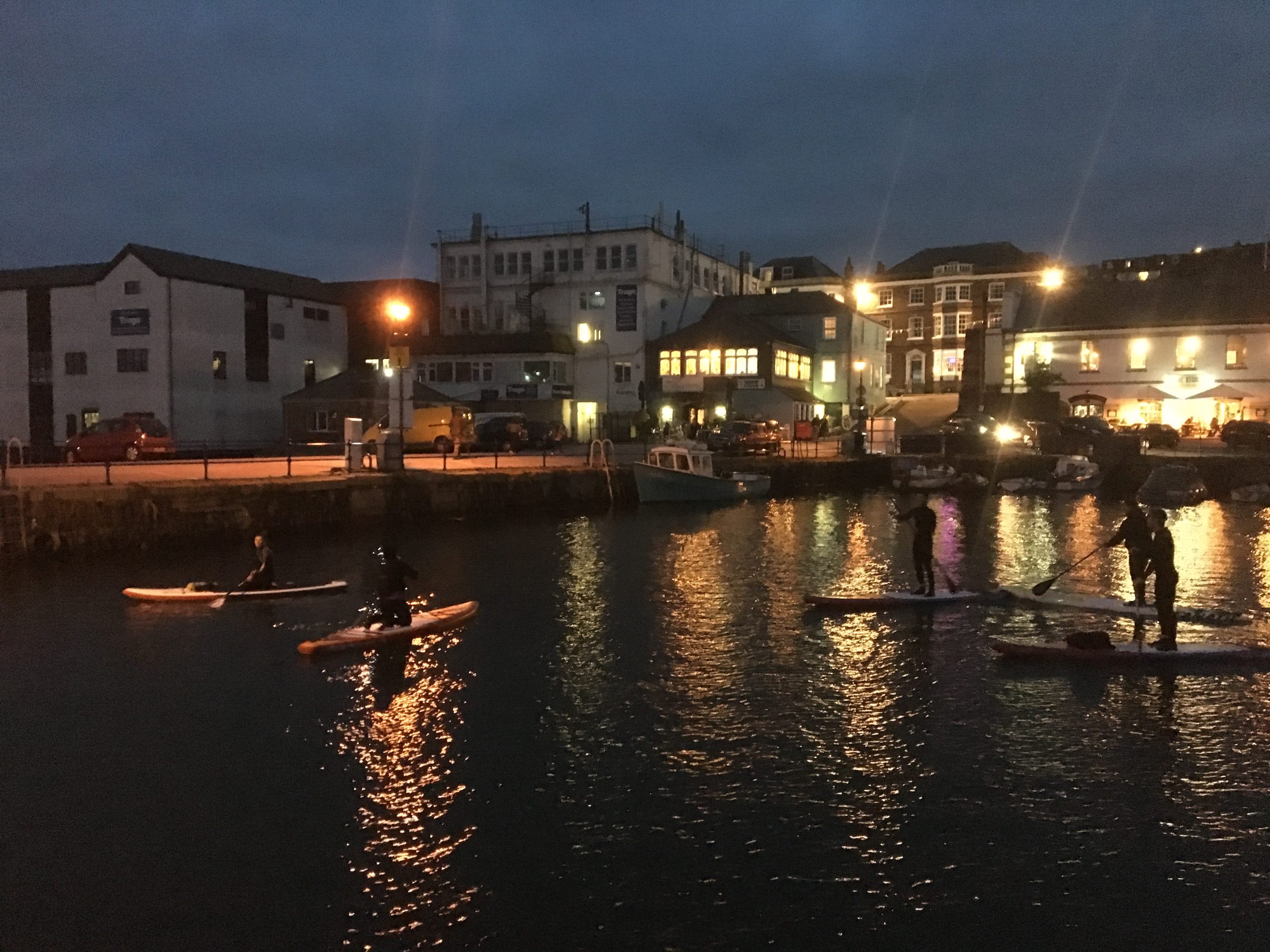
Every few strokes, we need to swap and paddle on the other side to make sure we don’t deviate off course. I’m so focused on keeping the board steady and aligned, I don’t realise I knock my light off my paddle as I switch hands – oops! Luckily Chloë has a spare. She tells me how the WeSUP club is what she loves most about paddleboarding – a few members have joined us this evening and there’s a strong feeling of support, shared enthusiasm, and fun, with a wide range of ages across the 70 or so members. Chloë tweaks my technique – I need to trust my body and use gravity to fall forward, then engage my core as I pull the paddle: ‘Paddleboarding is an all-over body workout, and it should be about 80% effort from your body and just 20% from arms, so you won’t tire as easily.’ As I veer off course, I practice the turning stroke and Chloë shows me how to do a backstroke, then swap my hand position while my paddle is towards the nose of the board, then continue into a push stroke on other side. As I loop round the board, I feel more confident.
9.15PM STARTING TO STAND
We head past shallow rocks, careful as the tide reaches its lowest, and I’m keen to attempt to stand. With Chloë instructing, I slowly get to my feet, but stay in a fairly squat position to retain a low hand position and minimise wind resistance. Chloë reminds me that I need to immerse the whole of my blade vertically in the water to maximise efficiency. I get back to my knees and we turn our boards around. With the wind behind our backs, we speed back to shore. It’s harder to steer and I don’t feel particularly graceful as we land on the beach, but I feel proud that I’ve braved the darkness and actually enjoyed it.
9.30PM PRACTICE MAKES PERFECT
With improved technique, I launch again and again from the beach, paddling hard and fast out into the waves, turning and returning to land. As I relax, I tune in to the feel of the board, listen to the lapping waves and adjust more easily to correct my body position. It still feels unnatural to be at sea after dark but I’m keen to go further afield into the harbour next time. It’s challenging, rewarding, plus I’ve had a good workout. My mind has been so busy focusing on paddle technique and body position that I hadn’t realised quite how far we have paddled.
ASK THE PRO
Chloë Peglau qualified as an SUP instructor in February. She loves running club events and bespoke paddleboard tours in the waters around Falmouth. ‘There are often ways I can help people of all levels improve their technique on the water but most of all I love the club atmosphere here at WeSUP,’ says Chloë, a chemistry graduate. ‘It’s supportive and there are so many adventures to be had along this coastline –last year a pod of dolphins swam alongside a group of paddleboarders, which was amazing! I love the night time paddles as they are challenging in a different way – no two trips are the same and sometimes we nip round into town, stop for a drink at the pub in our wetsuits and paddle back.’
NEED TO KNOW
HOW TO GET STARTED
Book a lesson if you are a novice or join the club. Classes and tours run throughout the year; always check the conditions and never paddle alone at night. Two-hour night paddle tours with WeSUP cost £45 per person, all kit provided (wetsuit, head torch, paddle and board). To book, call 01326 311830 or email
[email protected]. WeSUP, Gylly Beach, Cliff Road, Falmouth, Cornwall, TR11 4PA (wesup.co.uk).
GETTING THERE
Falmouth train station is half a mile away; it’s a six-hour journey via Truro to London Paddington. For information visit falmouth.co.uk
WHERE TO STAY
For luxurious retro-chic rooms and stunning sea views, just two minutes’ walk up from Gylly Beach, stay at Chelsea House Hotel, 2 Emslie Road, Falmouth, Cornwall, TR11 4BG. Double rooms from £85 (01326 212230, chelseahousefalmouth.com).

